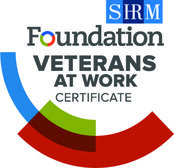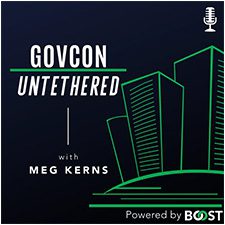Pricing Alert – The massive HHS/CMS PEO RFP is out!
Are you prepared to tackle the complex pricing requirements? It might seem straight forward at first glance, but read our detailed Pricing Synopsis to look out for some challenges and pitfalls to avoid.
Abstract: This 10 year $2B IDIQ contract has two task orders along with the IDIQ awards. However, bidders beware. Despite the use of fixed price task orders, there’s still a large amount of pricing detail and documentation required. Teams with large number of subcontractors will need dedicated management and support to ensure submission of accurate proposals.
Contract Overview
The Provider Enrollment and Oversight (PEO) Indefinite Delivery Indefinite Quantity (IDIQ) contract will provide contractor support to Centers for Medicare and Medicaid Services (CMS) to detect, prevent, and proactively deter fraud, waste and abuse in the Medicare and Medicaid programs.
CMS anticipates multiple awards with a combined ceiling of $2B over the life of the contract. The ceiling may be increased at the CMS’s discretion. A minimum of 4 awards will be reserved for small businesses (under NAICS code 541990 and a size standard of $15M). The RFP (75FCMC18R0014) is silent on the number of potential awards to other than small businesses. The maximum ordering period is five years plus (1) additional five-year option period for a total ordering period of ten years. Neither the RFP or the IDIQ Ordering Guide clarify whether the task order period of performance can extend beyond the IDIQ ordering periods.
In addition to the IDIQ contract awards, CMS will also award two Firm Fixed-Price Task Orders on an unrestricted (full and open) basis for Site Verification Services – Eastern Region and Western Region. The RFP notes that one Offeror cannot be awarded both Site Verification Services’ task orders.
IDIQ Pricing Requirements
The proposal is organized into six volumes. Volumes I through IV pertain to the IDIQ proposal. Volumes V and VI are reserved for offerors bidding on the two awardable task orders which we discuss separately. The IDIQ pricing information content is divided between Volume I – Contract Documentation and Volume III Business Proposal.
All offerors must submit basic pricing information which includes typical IDIQ level pricing requirements including accounting systems information, indirect rate information, and the submission of a sample task order pricing. The IDIQ award will be based on this information.
Adequate Accounting System
The RFP contemplates a predominant mixture of Cost Reimbursement (CR) and Firm-Fixed Price (FFP) form of task orders awarded. Offerors must have an accounting system that is deemed acceptable or adequate for determining costs Subcontractors who are anticipated to have CR contracting arrangements, including non-commercial Time and Materials type contracts, must also have an acceptable or adequate accounting system.
Rate Information
Offerors must submit indirect rate information in Volume I including both approved provisional indirect rates and any forward rate price agreements. Offerors that have no prior history of approved indirect rates must submit support documentation for the prior 3 years consisting of their current year operating budget and a forecast covering the anticipated period of performance and associated documentation on that supports the proposed rates. The RFP does not request offerors to propose any IDIQ ceiling rates for either direct labor, indirect or fixed fee rate. However, the RFP contains a clause which gives CMS the option to establish ceiling indirect rates. We think clause this has implications for pricing the sample task order discussed below.
Sample Task Order Pricing Requirements
The sample task order pricing is straightforward. Exhibit E.8 “QASP Sample Task Order Business Proposal Template” is to be priced for base and one option period. Labor is priced as fully burdened (inclusive of fee). The labor rates are then linked to a labor rate buildup backup detail for each task order period. Offerors must show the full detail of their proposed labor rate (including the erroneously termed ‘Fixed Fee’).
Curiously, the pricing template requests offerors to map proposed travel and ODCs by SOW section. However, similar mapping information for labor costs is not required. Travel cost detail must be provided for the Kick-off meeting. However, for remaining travel, CMS requests offerors to use a plug unit cost of $2,000 per trip per person. For indirect rates, the instructions specifically state to cross-reference Volume I for indirect rate basis information. Finally, a compensation plan must accompany the sample task order pricing. CMS provided a streamlined template in Exhibit E.8 reflecting the minimum information necessary to comply with FAR 52.222-46. We recommend offerors take the hint and provide just the bare minimums necessary for compliance and nothing more.
While the Exhibit E.8 is in itself not very complex, importantly, Offerors are required to provide additional, lower level, labor-hour detail under Technical Factor 3 – Key Personnel and Staffing Plan within the Technical Volume. The task order RFP requests full-time equivalent (FTE) and labor detail by CLIN, labor category, prime/subcontractor. The staffing summary must provide both full-time equivalents and labor hours. While the instructions do not request a lower level labor breakdown by individual subcontractor, subcontractors are required to provide this FTE and labor hour detail by CLIN (and 2nd tier subcontracts) in their Exhibit E.3 Subcontractor Proposal Information Checklist. Therefore, it will be important for primes to ensure their subcontractor labor data ties in three different proposal documents, Volume III Exhibit E.8 QASP Sample Task Order Business Proposal Template, Volume II – Technical Volume staffing summary, and Volume I – Exhibit E.3 Subcontractor Proposal Information Checklist. (Unfortunately, we revisit this theme of cross-volume data checking under the two larger (and real) task orders below.)
We’re not fans of RFPs that require pricing sample task orders that are not awarded. We believe they invite aggressive and potential unrealistic and irrational pricing. However, as mentioned above, there’s one RFP clause that could give bidders some pause from overly aggressive pricing of the sample task order, at least for indirect rates. Section E of Volume I instructions state, “In accordance with FAR 42.707, entitled ‘Cost Sharing Rates and Limitations on Indirect Cost Rates,’ CMS may establish indirect cost ceilings in the contract. If established, reimbursement will be limited to the negotiated indirect cost ceilings established in the contract…” We wonder what would happen if a bidder proposed aggressively low indirect rates for the sample task order (below their current approved provisional rates) and were awarded an IDIQ contract. Could CMS accept these low sample task order indirect rates and subsequently cap those rates for the life of the IDIQ? (Don’t say it can’t happen just because CMS did not make good on the threat on other contracts. I recall an Army recompete where, based on the prior contract, bidders priced the IDIQ using T&M rates with the understanding the Army would ultimately request task order pricing using those T&M rates, but issue task orders on a fixed price basis. Many bidders proposed low labor rates, assuming they could subsequently manage the labor hours on a fixed price task order to ensure adequate profit. The Army subsequently issued T&M type task orders, not fixed price, and the contract holders were stuck pricing and executing their task orders using the artificially low IDIQ T&M rates. The moral of the story: Anything is possible. Don’t assume past agency behavior is an assured prediction of future behavior).
Task Orders 1 and 2 Pricing Requirements
The IDIQ award will be based on the sample task order. CMS included two additional Firm Fixed Price (FFP) Task Order RFPs that will be awarded: Eastern Region Site Verification Services and Western Region Site Verification services. Both are full and open competitions. Offerors are permitted to bid on either one or both. However, CMS will not award both task orders to the same offeror. The cost proposals are contained within Volume VI (VI-A Eastern region, VI-B Western Region).
Pricing for both task orders are organized similarly in Attachment J.5.C (Eastern Region) and Attachment J.6.C (Western Region). Each pricing template contains five CLINs representing separate 12-month periods of performance. Each CLIN contains an “AA” sub-CLIN for ‘Site Visits’ (sites not associated with an Independent Diagnostic Test Facility (IDTF)) and sub-CLIN“AB” for IDTF Site Visits. Each subCLIN is further divided into 4 visit types (48 hrs., 7 days, 15 days, or 30 days). While the pricing attachments appear to denote these site visits in terms of visit length, we note that each SOW denotes the 4 visit types in terms of response time. So, a “30-day site visit” as labeled in the pricing attachment appears to really mean perform the site visit within 30 days’ notice according the SOW. A 48-hour site visit would mean perform the visit within 48-hour notice. This is an important distinction and we recommend offerors confirm that the SOW’s definition of site visits types is the correct definition.
Unit Pricing Requirements
Offerors must propose unit prices per visit type with associated breakdowns of fully burdened labor, travel. ODCs, and subcontract costs. The pricing templates are designed to apply the same proposed CLIN/Site-visit type unit price to both the minimum order guarantee quantities and to the (larger) estimated quantities. Therefore, the template produces two total prices: A ‘minimum quantity’ price and a total price based on ‘Estimated Quantity’.
Detailed Labor Tracking
As discussed under the sample task order, similar cross-volume labor detail is required for each of the awardable task orders. Similarly, it will be important for primes to ensure their subcontractor labor data ties in three different task order proposal documents, Attachment 5 (or 6) pricing template, Volume V – Technical Volume staffing summary, and Volume VI – Exhibit E.3 Subcontractor Proposal Information Checklist. Finally, we also note, the task order instructions are silent on whether the staffing summary must be built to the minimum order quantities, estimated quantities or both. CMS should clarify
Burdensome Basis of Estimates
In addition to providing the Excel pricing attachments, offerors must provide a Business Proposal Narrative. The narrative must include among other things, a Basis of Estimate. The BOEs must, “describe the BOE used to establish those estimates as fair and reasonable. This includes providing all assumptions used to establish proposed prices and any and all empirical data which can provide further support to the proposed prices as fair and reasonable. The Government needs to understand how you determined the prices per element and how that correlates with the technical approach”. We’re surprised this level of detailed documentation is needed given the work scope is somewhat standardized and offerors are proposing fixed prices. We wonder why CMS wouldn’t rely on direct comparison of offeror prices to establish price reasonableness. Regrettably, this represents a lost opportunity to streamline the time and effort required for both the bidders and for CMS.
The BOE instructions request further details for each cost element. Offerors must provide the labor category(s) that make up the “Labor” price per site visit and include information on proposed escalation of each price element as well as the level of ‘productive labor’ in 1 full time equivalent (FTE).
Similar types of information are requested to explain travel and ODC costs. For subcontractor costs, the RFP does not explicitly request similar pricing details as the prime, except it specifically states primes must include a subcontract “Certificate of Current Cost or Pricing Data; as appropriate”. Until the Contracting Officer determines adequate competition does not exist, we do not believe there’s any reason for subcontractors to submit certified cost and pricing data.
SOW Disconnect?
While each SOW (Eastern and Western) identifies the states and territories covered, each SOW also contains an extra provision to optionally expand the geographical scope of services required. SOW 3.3, paragraph 2 states, “The Contractor shall have the ability to conduct nationwide site verification services at locations in all 50 States and 6 Territories, if required by CMS and with a minimum 30-day notification. (emphasis added). We would think the ‘East Region’ contractor might object to CMS and giving ‘East Region’ work to their counterpart ‘West Region’ contractor and vice versa.
Other Pricing Quirks
SOW 3.5, paragraph 2 states, “If there are multiple providers at the same location, the Contractor shall provide one record for each provider with the appropriate provider ID and provider name attached to each record”. However, pricing is based on ‘site visits’ and appear to be location based. In this instance, multiple providers at one location appears to represent (1) site visit. We think offerors should seek clarification.
Conclusion
We’re surprised at the level of cost and pricing data and associated documentation requested for the first two task orders, even though there’s adequate price competition and fixed pricing for presumably standardized services. Bidders with a large team of subcontractors should carefully manage the proposal to ensure the labor data correctly ties out among multiple proposal documents. We also think offerors (especially small businesses) should exercise care when pricing the sample task order to ensure they don’t unintentionally sign up for low indirect rates that they may not be able to adequately accommodate during the IDIQ contract.
If you’re looking to BOOST your proposal give us a call or send us an email, [email protected]. We’re able to provide pricing synopses on a variety of RFP opportunities to help you avoid pitfalls and tackle requirements the right way.
Prepared by BOOST LLC/Michael Gallo
Opportunity identified by The Pulse of GovCon






